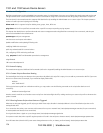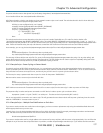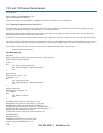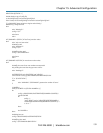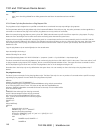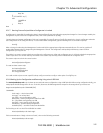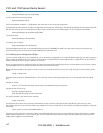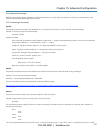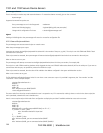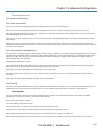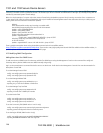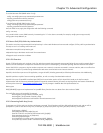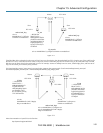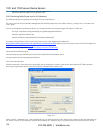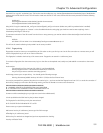
1101 and 1102 Secure Device Servers
724-746-5500 | blackbox.com
144
portmanager daemon
There is normally no need to stop and restart the daemon. To restart the daemon normally, just run the command:
# portmanager
Supported command line options are:
Force portmanager to run in the foreground: --nodaemon
Set the level of debug logging: --loglevel={debug,info,warn,error,alert}
Change which configuration file it uses: -c /etc/config/portmanager.conf
Signals
Sending a SIGHUP signal to the portmanager will cause it to re-read its configuration file.
The portmanager can execute external scripts on certain events.
When the portmanager opens a port:
It attempts to execute /etc/config/scripts/portXX.init (where XX is the number of the port, e.g. 08). The script is run with STDIN and STDOUT both
connected to the serial port.
If the script cannot be executed, then portmanager will execute /etc/config/scripts/portXX.chat via the chat command on the serial port.
When an alert occurs on a port:
The portmanager will attempt to execute /etc/config/scripts/portXX.alert (where XX is the port number, for example, 08)
The script is run with STDIN containing the data which triggered the alert, and STDOUT redirected to /dev/null, NOT to the serial port. If you want to
communicate with the port, use pmshell or pmchat from within the script.
If the script cannot be executed, then the alert will be mailed to the address configured in the system administration section.
When a user connects to any port:
If a file called /etc/config/pmshell-start.sh exists it is run when a user connects to a port. It is provided 2 arguments, the "Port number" and the
"Username". Here is a simple example:
</etc/config/pmshell-start.sh >
#!/bin/sh
PORT="$1"
USER="$2"
echo "Welcome to port $PORT $USER"
< /etc/config/pmshell-start.sh>
The return value from the script controls whether the user is accepted or not, if 0 is returned (or nothing is done on exit as in the above script) the
user is permitted, otherwise the user is denied access.
Here is a more complex script which reads from configuration to display the port label if available and denies access to the root user:
</etc/config/pmshell-start.sh>
#!/bin/sh
PORT="$1"
USER="$2"
LABEL=$(config -g config.ports.port$PORT.label | cut -f2- -d' ')
if [ "$USER" == "root" ]; then
echo "Permission denied for Super User"
exit 1
fi
if [ -z "$LABEL" ]; then
echo "Welcome $USER, you are connected to Port $PORT"
else
echo "Welcome $USER, you are connected to Port $PORT ($LABEL)"



